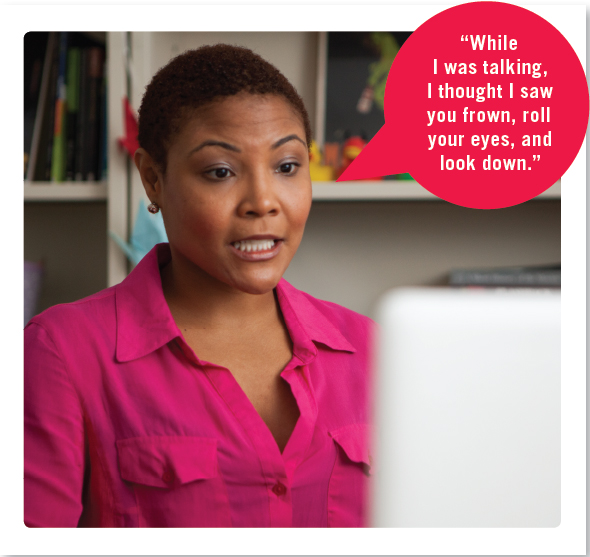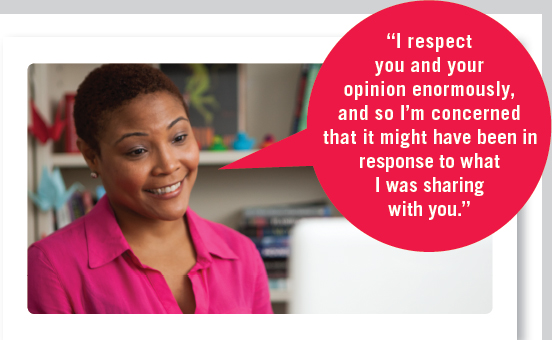HOW TO COMMUNICATE | Video Skills
PERCEIVING NONVERBAL MESSAGES
One way to improve your communication competence is by adapting your messages to others' behaviors. Learn how to handle incongruent messages in nonverbal communication by going to LaunchPad at bedfordstmartins.com/choicesconnections and by completing the How to Communicate video scenario for Chapter 6 to practice your skills.
CONSIDER THIS:
While on a Skype video call with a long-distance friend, you describe your new romantic partner—explaining why the two of you get along so well. During your story, your friend frowns, rolls her eyes, and looks down at the floor.
WHAT WOULD YOU DO?
The following advice below illustrates how to use perception-checking to ask if you are interpreting nonverbal messages correctly. As you watch the video, consider how nonverbal communication is used, perceived, and discussed. Then, test your knowledge of key skills, and create your own responses to the What if? video prompts.

1 DESCRIBE YOUR OBSERVATIONS in neutral terms, being as specific as possible and using “I” language in explaining your perceptions.

2 EXPRESS YOUR CONCERNS about her nonverbal communication, framing her behavior as “it” rather than “your actions” and emphasizing that your concern derives from admiration.

3 DIRECTLY ASK her about the meaning of her nonverbal communication, making sure to use “I” language and suggesting several possibilities so that it's not a “yes/no” question.
WHAT IF? But what if things don't work out as shown? Test your ability to adapt your communication by watching the What if? videos below and planning a response for each situation.
- What would you do when your friend denies that she made the nonverbal behaviors in question, saying, “I don't know what you are talking about. I didn't do anything”?
- How would you handle your friend when she says that her nonverbal behaviors were unrelated? “I was just checking the time. I have to get going or I'll be late for my shift.”